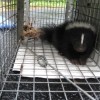Lyme disease is a frequently under-addressed problem for many northern Virginia home owners. Transported by animals, rodents, deer, and ticks, Lyme disease can have serious repercussions to your health and the health of those you love.
The best step to solving this problem is to understand how these can effect your home.
Animals and rodents
Though deer can carry Lyme disease, what is a greater risk to the average northern Virginia homeowner is rodents. Mice will carry Lyme disease, and unlike deer, they can nest inside the walls of your home spreading the disease. As a result, it is very important to check your home for signs of rodent habitation. This can range from chew marks around the linings of a roo to fecal matter left in small quantities on the floor. It may be best to find a way to either trap or exterminate the infestation, as it may be putting your health at risk.
Ticks – Lyme Disease source
The other bringer of Lyme Disease are a number of different kinds of ticks. Ticks can set up nests within your home as well, and being significantly smaller, may be harder to find. Your best bet is to first look very carefully around your home to see if you can spot any walking on carpets or the floor. A big step towards helping you in this is to de-clutter your house of everything you do not need. Move things away from the walls, and make sure that most surfaces are clearly visible.
Another thing you can do if you believe you have localized a tick population is to dust your home with pesticides. This isn’t as extreme as you may think, just lightly dust the floor around where you think a tick population may be set up. When combining this with frequent cleaning of the linens and clothing, you can dramatically reduce the likelihood of pests, and Lyme disease from invading your home and putting your family at risk.


